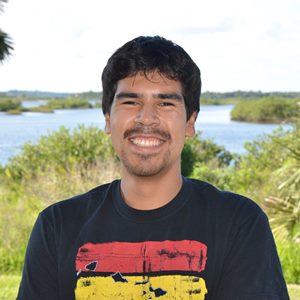 The Whitney Laboratory for Marine Bioscience
The Whitney Laboratory for Marine Bioscience

Congratulations to former Whitney PhD student Miguel Salinas-Saavedra for the publication "Par protein localization during the early development of Mnemiopsis leidyi suggests different modes of epithelial organization in the Metazoa" in the journal eLife.
Epithelial tissue is likely to be the most ancient tissue type in animal evolution (the other three tissue types are connective, neural, and muscle). Epithelial tissue is composed of sheets of cells that are polarized (the apical side is different than the baso-lateral sides) and is held together by special cell adhesion junctions located baso-laterally. In all species of the clade of animals called the Bilateria (bilaterally symmetrical animals) that have been investigated, there is a conserved set of proteins responsible for instigating and maintaining both embryonic polarity and epithelial integrity. These conserved proteins organize the special cell-cell adhesion junctions and are members of the “Par system”.
While a graduate student in Mark Martindale’s lab, Dr. Salinas-Saavedra investigated the spatial distribution of members of the Par system in one of the most ancient groups of animals called ctenophores (or comb jellies). A surprising result from his study was the finding that the Par system was not involved in either embryonic polarity or epithelial organization in ctenophores.
Furthermore, analysis of the ctenophore genome showed that there were significant differences in the cell adhesion systems in ctenophores compared to all other animals. These data add to Miguel’s previous work on characterizing cnidarian epithelial polarity, which shows that bilaterian animals co-opted the Par system deployed in epithelia tissue polarity to be used in embryonic polarity by a heterochronic cooption of Par expression to earlier developmental stages. These results raise important questions about the character and molecular basis of polarized epithelia tissue in the earliest animals and how they have evolved in other animals.
Miguel has since earned a postdoctoral fellowship from the Human Frontiers Foundation and is working in in Galway at the Centre for Chromosome Biology at the National University of Ireland. Congratulations Miguel!